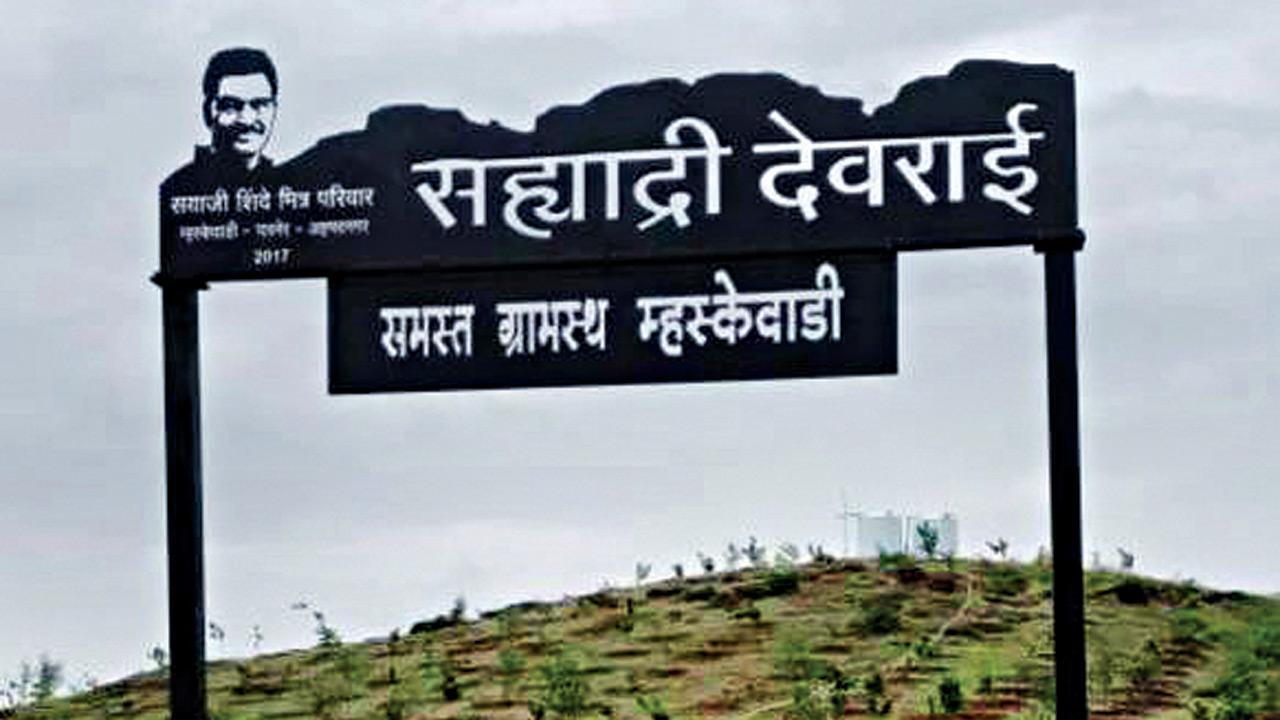Marathi actor and environmentalist Sayaji Shinde is planting indigenous trees across drought-prone regions of the state, in the hope of reviving the sacred forest patches that are falling prey to rapid urbanisation

A devrai being revived by NGO Sahyadri Devrai in Ahmednagar, Maskewadi
In Maharashtra, the devrais are considered to be sacred. These forest patches are home to ancient, indigenous trees, and a variety of rare and endemic flora and fauna, making them biodiversity hotspots. But, over the last few years, due to lack of awareness and rapid urbanisation, the devrais have been staring at an ecological disaster.
ADVERTISEMENT
Veteran Satara-based Marathi actor Sayaji Shinde is on a mission to revive these green islands. Shinde, who runs the environmental NGO, Sahyadri Devrai, is planting lakhs of indigenous trees and plants across Maharashtra, especially in drought-prone areas.
Manisha Patankar Mhaiskar and Vaibhav H Raje
For the last three years, he and his volunteers have been educating locals and villagers about the ecological role of devrais. “Devrais are the epitome of a well-developed ecosystem. They promote the growth of rare and endangered medicinal plants, as well as potential genetic diversity banks, which must be preserved. The dense cover of trees growing inside these devrais forms an umbrella, allowing the water to slowly reach the ground, and help increase the water reserves in the nearby farms, wells and lakes,” explains the actor.
The trees inside the devrais, he says, are home to over 50 different bird species that enjoy the sweet and fleshy fruits that grow here. “Unfortunately, the trees are felled in large numbers every year during the Konkan Holi festival,” he says. One of his many novel initiatives was to celebrate the birthdays of these indigenous trees in order to monitor their growth and to foster a strong bond between trees and villagers.
Given the significance of these trees, Shinde and his team are also collecting seeds from the existing devrais in the region, and conducting extensive tree planting drives in Satara, Sangli, Aurangabad, Jalgaon, and Ahmednagar. More than 3,500 indigenous trees have already been planted along roadsides, near temples, schools, and gram panchayats, says Shinde. “Our vision is to live in harmony with nature by protecting and conserving endangered indigenous trees, plants, species, and habitats.”
Discussing the importance of heritage trees, Vaibhav H Raje, International Society of Arboriculture (ISA) certified arborist, says that “as trees grow older, the value of the ecosystem services that they provide increases, reaching its peak at full maturity, depending on the species and the condition of the tree”. “Our goal should be to allow trees to reach their full potential, so that we can reap the benefits they provide. Even a dead, dying, or decaying tree in a non-urban area with large cavities in the trunk provides immense ecological value by harbouring various microbes or insects and providing a suitable habitat for some of the local wildlife. Trees have long been recognised as the most effective and long-lasting living beings for sequestering atmospheric carbon and regulating the global warming crisis,” says Raje.
Manisha Patankar Mhaiskar, Principal Secretary of Environment and Climate Change, Maharashtra, says that a slew of amendments have been made by the state cabinet to ensure that heritage and indigeneous trees are protected. “In a recent set of amendments, we defined heritage trees as those that are more than 50 years old. We have now decided to develop a method to determine the age of these trees,” she says. Under the new amendments, the state government, and not the local corporation, has been given authority to protect heritage trees. “Also, until recently, the law stated that if you cut a 50-year-old tree, you only had to plant one tree in return. That has been changed. Now, if you cut a tree that is 80 years old, you must plant that many trees as the age of the tree.”
The state has also launched the Majhi Vasundhara Abhiyan, now in its second year. As part of the initiative, councils, cities, and towns have been asked to conduct a census of all trees, heritage trees in particular. Such initiatives, says Raje, will help protect devrais from unnecessary hacking and damage in the future.
The Way Forward
>> A proper heritage tree assessment and maintenance protocol must be established with the help of arboriculture experts
>> An online state or a national heritage tree register could also be prepared, which can be used for public education and local tourism promotion
>> Similar to our heritage buildings, a year-round maintenance budget must be diligently allocated for our heritage trees to carry out necessary activities like scientific pruning, propping, fencing, and cabling or bracing, so as to give them the respect they truly deserve
Courtesy/Vaibhav H Raje
 Subscribe today by clicking the link and stay updated with the latest news!" Click here!
Subscribe today by clicking the link and stay updated with the latest news!" Click here!











